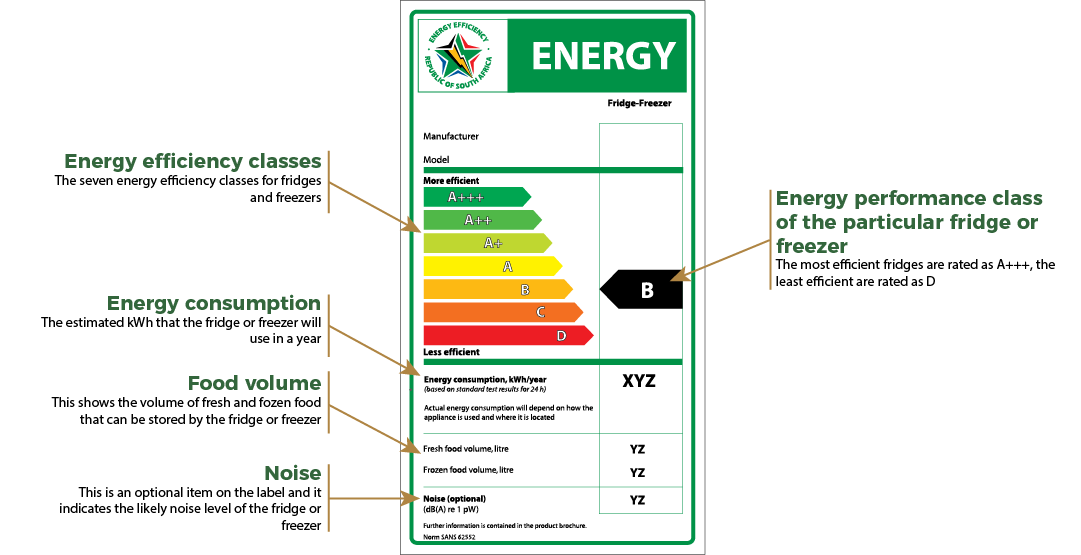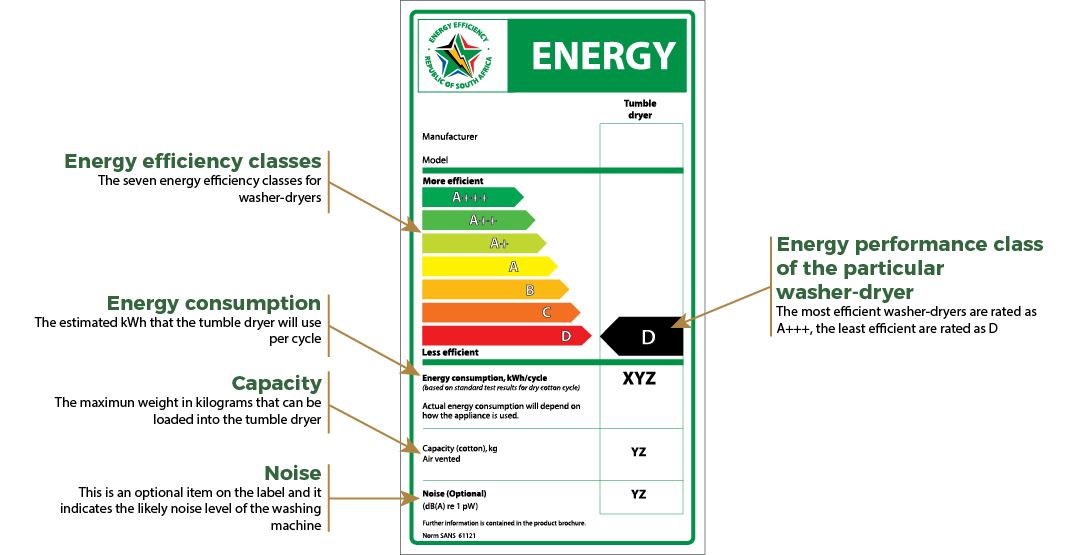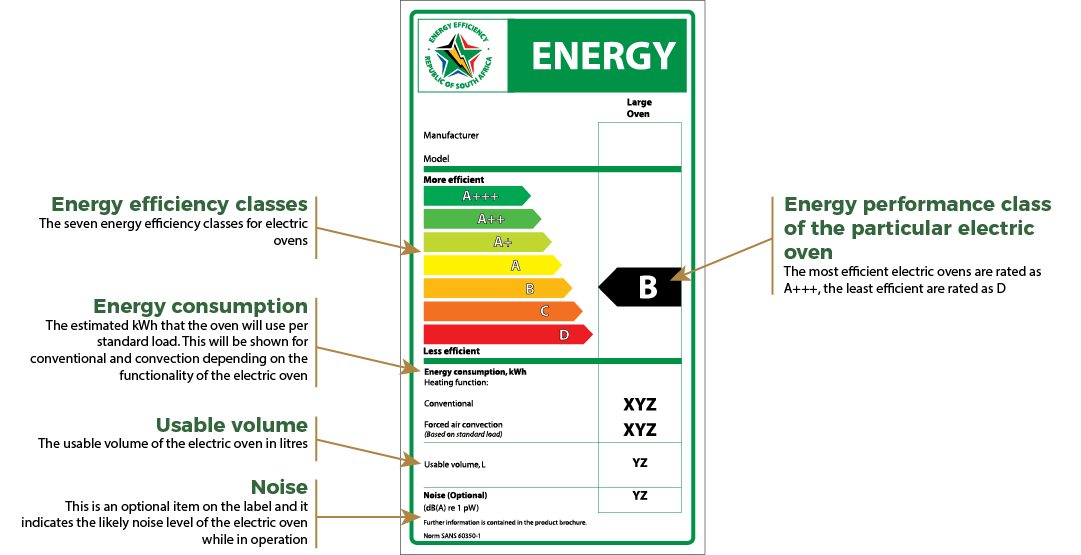Dishwashers
Dishwashers that are used frequently can be significant users of energy and water in households. Consumers who make regular use of their dishwashers should carefully consider the energy and water consumption of a dishwasher before making a decision to purchase.
To protect consumers from purchasing inefficient dishwashers Minimum Energy Performance Standards (MEPS) have been set for dishwashers. Currently, dishwashers with a Energy Efficiency Rating of Class A or better can be sold.
The larger the dishwasher the more energy and water required to clean the dish-washing space. As a result the most important decision to be made when purchasing a dish washer from an energy efficiency perspective is what size dishwasher to purchase. Ideally consumers should purchase the smallest dishwasher that their needs. For instance if a consumer plans to do regular small washes a smaller appliance would be appropriate. On the other hand for larger households that require large amounts of dishes to be washed at one time a larger appliance would be appropriate.
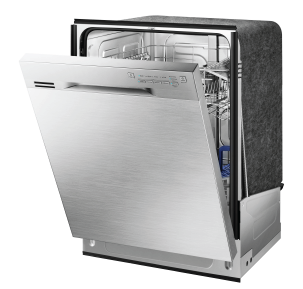
Understanding the energy efficiency label
Dishwashers being sold must be labelled with a South African Energy Efficiency Label to help consumers understand the relative energy efficiency of different dishwashers . The image below shows a sample of a label for a dishwasher with an explanation of the key elements of the label.
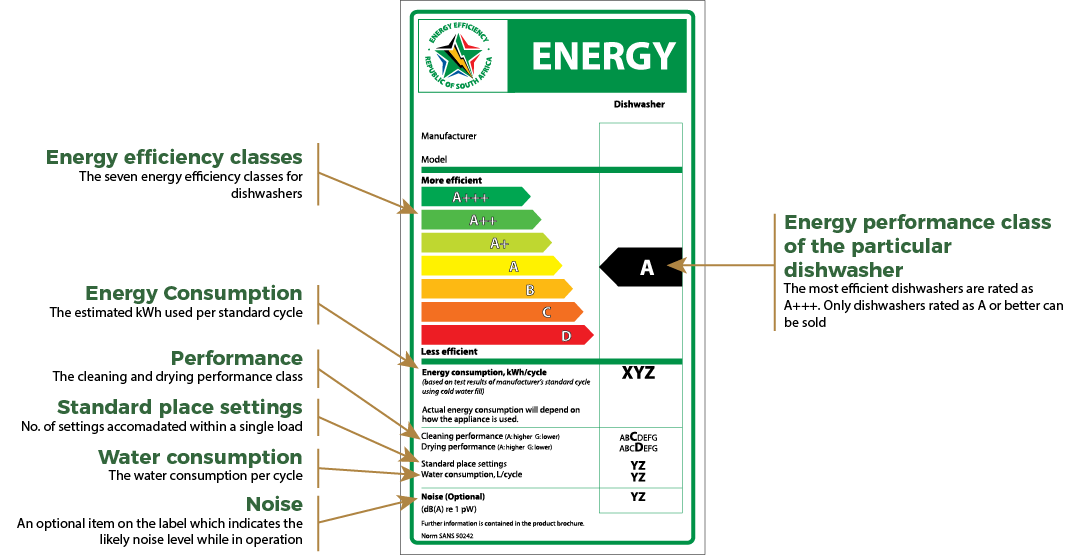
Calculating how much the appliance will cost to run
To calculate the annual running costs of a dishwasher multiply the kWh figure given on the label by the number of washes you are likely to do in a single week. Next, multiply by 52 weeks. Finally multiply by the cost of electricity in your municipality. You can find the kWh cost of electricity in your municipality by looking at your electricity bill.
For example, if the label indicates that the dishwasher will use 1.02 kWh per cycle and where you live a kWh of electricity costs R2 (including VAT), the cost of running the dishwasher that you use 9 times a week will be R954.72 for the year.
Appliance Energy Calculation Tools were created to aid consumers to make more informed decisions by calculating the long term cost for running an appliance. Click here to calculate the running costs and CO2 emissions for dishwashers.
{Energy Consumption Per Cycle}
x {Number of washes per week}
x {Number of weeks in a year}
x {Cost of Electricity in your municipality}
= Annual running cost of the appliance
1.02 kWh X 9 washes per week X 52 weeks in year X R2 per kWh = R954.72
Tips for using your appliance most efficiently
 Wash a full load of dishes
Wash a full load of dishes
Instead of running partial loads, wait until the dishwasher is full, which will save energy and water by reducing the total number of cycles required in a week.
 Scrape dishes before washing
Scrape dishes before washing
Avoid having to run two cycles in the dishwasher by scraping all the food from the dishes before placing them in the dishwasher.
 Clean the spinning arms
Clean the spinning arms
Maximise the efficiency of the dishwasher by inspecting and cleaning the spinning arms regularly.
 Reduce the heating temperature
Reduce the heating temperature
Clean dishes with less energy by reducing the heating temperature in the dishwasher from high to medium.
 Air dry dishes
Air dry dishes
Switch off the dryer after the wash cycle so that the dishes can air dry, which will reduce the amount of energy used by the dishwasher.





